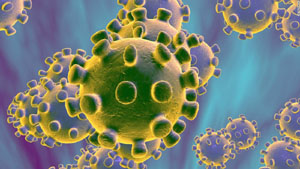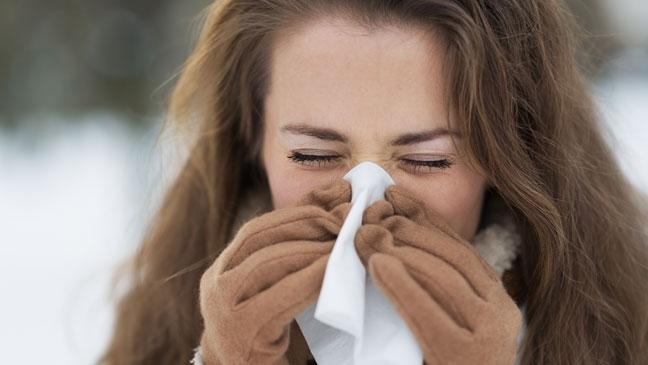
Friday January 24, 2020 ~ INTERNATIONAL [ 9 pm PST | Updated 11:30 pm ]
by Mary P Brooke, B.Sc. – West Shore Voice News
A Corona-type virus that starts in animals and can jump to humans has made that jump in China and a new disease is spreading.
Momentum of the Wuhan coronavirus spreading from human to human
is a key part of the worldwide concern about this new disease.
The new virus which was first seen mid-December 2019 is named after the Wuhan province of China where the mutated virus originated. The area of ‘ground zero’ infection was at a live-animal outdoor market where live animals and freshly killed meat are sold side-by-side.
All 41 deaths from the disease so far have been in China (15 of those in just the last day), in areas close to the original starting point of the first infection, it was reported in national and international media by this evening, Friday January 24. The same time period has produced 1,300 people ill with the Wuhan Coronavirus.
As of this evening, the UK Guardian has reported that a doctor treating victims infected with the coronavirus in the Chinese city of Wuhan has died from the virus.
China was slow at first to release information about this disease (the first case was made known on December 12, 2019), but now has chosen to lock down several cities and regions, essentially immobilizing about 36 million people (about the same population as Canada) who cannot travel about in their communities or board buses, trains or airplanes.
China has been blocking social media reports of the disease but seem exceptionally forthcoming in releasing the genetic code to the World Health Organization (WHO) and public health authorities around the world.

China had also at first repeatedly stated that there was no evidence of human-to-human spread of the disease (which turned out to be false), leading the WHO and outside world to believe that closing the live animal market effectively brought the outbreak to a halt. This allowed the disease to spread internationally unchecked, getting a ‘head start’ if you will.
This being the Chinese lunar new year season, many people are travelling to and from China. It is the largest migration of people on the planet each year, with people visiting family in locations around the world.
Health Canada, Ontario health officials, and the BC Provincial Health Officer have said this week that procedures are in place to handle any cases of the Wuhan Coronavirus that emerge in Canada.

Health Minister Patty Hajdu said yesterday that five or six people are being monitored in Canada, including at least one in Vancouver and another Quebec. “At this point, there has not been a positive case in Canada,” Hajdu told reporters in Ottawa on Thursday. “The risk is low to Canadians.”
One man with symptoms self-reported in the Seattle area, and a woman with symptoms self-reported in Chicago. Both had been to the Wuhan area.
The World Health Organization has met twice in the last few days — with a news conference given after each meeting — and so far they are not declaring the Corona virus situation to be a global health emergency. They feel that the health prevention community around the world is well prepared, based on lessons learned during the outbreak of SARS (i.e. severe acute respiratory syndrome, which is also caused by a Corona-type virus) in 2003; that have given the public health profession 17 years to prep for something like what is happening now.
Declaration of a global health emergency would mean that international travel would be dramatically affected, which would impact not only travellers for business and tourism but also the shipping of goods that support economies around the world. Hence, WHO is not taking that step just yet, but they may.
WHO and health agencies around the world are continuing to observe, monitor and assess the severity of the disease, how it spreads, and how quickly it spreads.
The disease has been observed now in patients in 10 countries around the world, including in China (in at least 20 cities), Australia, France, Japan, Vietnam, Singapore, Taiwan, South Korea, Hong Kong, Macau and the USA. So far there are no reported cases in Canada though two people in BC hospitals are being monitored and four in Quebec.
Like SARS, the Wuhan Corona Virus has the ability to bind to a protein found on the surface of most human lung cells.
China is building a 1,000-bed hospital right now from scratch (TV images show land-leveling equipment clearing a large area of land) which is said to be equipped and ready next week. This could indicate an expectation of sheer volume of ill citizens, or an expectation of increased transmission between persons.
A vaccine is under development by researchers associated with the University of Saskatchewan in Saskatoon. There is a strong animal-research and vaccine operation there at U of S, which gives them a head-start with handling an animal-source virus. A vaccine could be ready within a week, it was estimated by one health professional on a national TV interview.
This virus has emerged during the usual period of time called ‘flu season’. The symptoms are mostly similar to any other flu, including cough, fever, and runny nose. The difference with Corona is that — as it progresses — it essentially consumes the lungs, similar to pneumonia.
Given that this is happening right in the middle of the usual flu season, any symptoms a person has (e.g. coughing, runny nose, fever, fatigue) could just be the flu, but need to be tested to see if it’s the new Corona virus.
The common cold is also caused by Corona viruses. The Chinese government released the new Corona virus genetic code very quickly to the public health community. The lab test for the new disease takes about 24 hours to show a result.
Heat detection at airports is ineffective to spot this early on, say health professionals. The most important and effective screening history is for qualified health professionals to take a travel history.

Public health officials are reminding people to take the usual precautions that are recommended in flu season, i.e. washing hands frequently, not touching your hands to your face, sneezing away from people (and ‘into your elbow’ or preferably into tissues that you discard right away), and staying home if you are not feeling well.
If you are not well and you need medical attention, don’t just go to a clinic or hospital. Call ahead first, so that health care professionals can prepare for your arrival in a way that avoids infecting others (both other patients and the health care workers).
People whose immune systems or overall health is other compromised (with another illness or condition including any lung, heart or kidney disease) — as well as the elderly — seem to be most susceptible.
Taking steps to maintain a robust immune system is good prevention at any time. That includes getting enough sleep, adequate exercise and fresh air, eating nutritious foods, and supporting the body with additional immune support such as selected vitamin and mineral supplements.
========== NOTES:
BC Centre for Disease Control: latest updates on the 2019-nCOV virus
An excellent commentary by a CNN reporter who sees the parallels with SARS and offers more detail on the Chinese handling of the disease.
People without symptoms could be spreading the virus – New York Times, January 25, 2020


